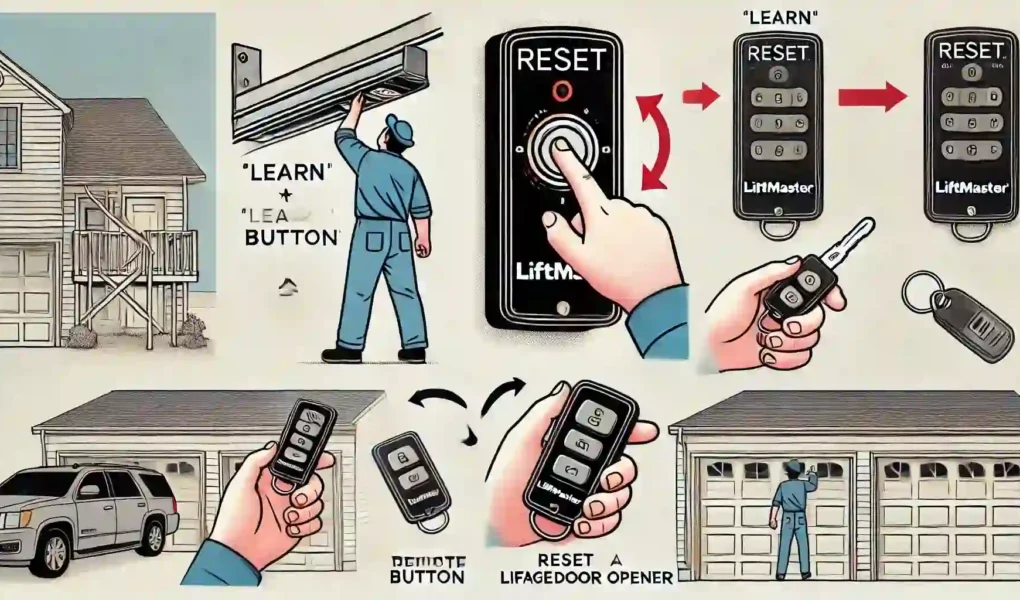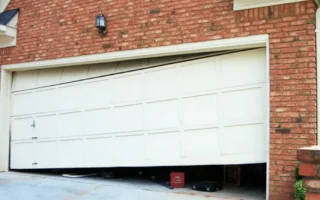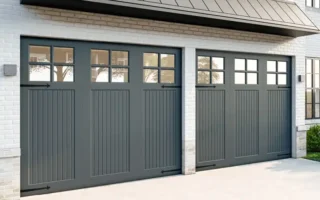Disabling your home garage door opener can be an important step for enhancing security, performing maintenance, or preventing unintended access. Whether you are leaving your home for an extended period, suspect unauthorized use of your garage, or need to troubleshoot a malfunction, knowing how to safely disable the opener ensures that your garage remains secure and under control. This process involves simple yet effective methods such as unplugging the power source, using built-in lock features, or disengaging the door for manual operation. Properly disabling the garage door opener not only helps protect your belongings and home but also prevents accidental openings that could lead to injury or damage. In this guide, practical steps and key safety tips will be shared to help homeowners confidently and safely disable their garage door openers without causing damage or compromising convenience. Understanding when and how to disable the opener is essential for peace of mind and effective home security management.
| Step | Method | Description | Safety/Precautions |
|---|---|---|---|
| 1 | Unplug the Opener Unit | Disconnect the power cord from the ceiling outlet to stop all remote and wall controls. | Ensure garage door is closed before unplugging. Plug back in to restore. |
| 2 | Use Wall Console Lock Feature | Activate the “lock” button on the wall control panel to disable remote signals but keep wall control functional. | Refer to your opener manual for location and instructions. |
| 3 | Deactivate Individual Remotes | Temporarily disable specific remotes without erasing them from memory (varies by model). | Check opener manual for remote disabling steps. |
| 4 | Pull Emergency Release Cord | Pull the manual release cord to disengage the door from the opener for manual operation. | Only do this when the door is fully closed to avoid accidents. |
| 5 | Reset or Reprogram Codes | Press the smart or learn button on the opener motor to erase all remote codes to disable remotes. | Reprogram remotes if needed to restore access later. |
| 6 | Cover or Misalign Sensors | Temporarily obscure or misalign safety sensors to disable their function (not recommended for safety). | Use only when necessary and restore alignment ASAP. |
The Importance of Garage Door Safety
Garage door safety is often overlooked, yet it plays a crucial role in protecting your home and loved ones. These heavy doors can pose serious hazards if not managed properly. Accidental closures or malfunctions can lead to injuries, especially for children and pets.
Moreover, a secure garage acts as the first line of defense against potential intruders. An easily accessible garage could be an open invitation for burglars looking for quick entry into your home.
Regularly ensuring that your garage door opener functions correctly contributes significantly to overall household safety. Proper maintenance helps prevent unexpected issues that could compromise security.
Additionally, understanding how to disable the opener during emergencies enhances preparedness. It’s vital to have this knowledge on hand so you can act quickly when needed while maintaining peace of mind regarding your family’s well-being.
Understanding the Different Types of Garage Doors and Openers
Garage doors come in various styles and materials, each serving unique purposes. The most common types include sectional, roll-up, slide-to-side, and tilt-up models. Sectional doors are popular due to their versatility and insulation options.
When it comes to openers, understanding the differences is crucial for your home’s security. Chain-driven openers are robust but can be noisy. Belt-driven openers offer quieter operation but may cost more initially.
Another option is screw-drive openers, which require less maintenance than chain systems yet might struggle with extreme temperatures.
Smart garage door openers have gained popularity too; they allow remote access through smartphone apps for added convenience and control while enhancing security features.
Choosing the right combination of door and opener ensures functionality that meets your lifestyle needs while providing safety for your family and belongings.
Step-by-Step Guide to Disabling Your Garage Door Opener
Disabling your garage door opener can be straightforward if you follow a few simple steps. First, locate the manual release cord. This is usually a red cord hanging from the opener.
Before proceeding, ensure that no one is near the garage door. Safety should always come first.
Next, pull down on the manual release cord to disconnect it from the motor unit. You may hear a click; this means it’s disengaged.
Now, test by manually lifting the door slightly to confirm it’s now in manual mode.
If you need to completely cut power for any reason, unplugging the unit or turning off its circuit breaker will do just fine.
Keep in mind that some openers have a lock feature; consult your user guide if needed for specific instructions related to your model.
Common Mistakes to Avoid When Disabling Your Garage Door Opener
One common mistake is forgetting to unplug the opener. Simply disabling it through the control panel won’t stop all power sources. Always make sure you disconnect it completely.
Another pitfall is neglecting to inform family members about the change. Without communication, someone might accidentally try to use a disabled door, leading to confusion or accidents.
Failing to check safety features can also be an issue. Before disabling, ensure that any emergency release mechanisms are functional and accessible for future needs.
Some people overlook proper storage of remotes and keypads after disabling their opener. Securely store them away from children’s reach to prevent unauthorized access later on.
Don’t ignore your garage’s manual when troubleshooting or making changes. It holds valuable information specific to your model that can guide you through safe practices while managing your garage door system.
Additional Safety Precautions to Take for Your Garage Door
When it comes to garage door safety, being proactive is key. Start by regularly inspecting your door’s components for wear and tear. Look at the springs, cables, and tracks for any signs of damage.
Consider installing a motion sensor light around your garage area. This can deter intruders while providing better visibility when you’re coming or going at night.
Make sure that children understand the dangers associated with the garage door. Teach them never to play near it or attempt to operate it without supervision.
Another crucial step is checking the auto-reverse feature on your opener regularly. This function prevents accidents by reversing the door if something obstructs its path during closing.
Ensure all remote controls are kept in secure places and not easily accessible to strangers or children. Taking these steps will enhance safety for everyone in your household.
Tips for Maintaining a Safe and Functional Garage Door
Regular maintenance is key to a safe and functional garage door. Start by inspecting the door’s tracks for dirt or debris. Clean these areas with a damp cloth to ensure smooth operation.
Check all moving parts, including rollers and hinges, for wear and tear. Lubricate them quarterly using a silicone-based spray. This can help reduce noise and prevent rust.
Test the safety mechanisms regularly. The auto-reverse feature should activate if an object obstructs the door’s path. Conduct this test monthly to ensure it functions correctly.
Keep sensors clean and aligned as well. Dirty lenses can hinder their ability to detect obstacles, which poses safety risks.
Consider scheduling professional inspections annually. Experts can identify issues you might overlook, ensuring your garage door remains in top condition for years to come.
Conclusion: Ensuring You and Your Family Stay Safe with a Properly Disabled Garage Door Opener
Disabling your garage door opener is a crucial step in ensuring the safety of your home. Whether you’re performing maintenance, addressing security concerns, or simply need to keep things secure for a while, understanding how to disable it properly can prevent accidents and mishaps.
Remember that regular checks on both the door and its mechanism can help maintain an optimal level of safety. Always stay informed about the specific type of garage system you have as this knowledge will guide your actions when disabling or enabling features.
Taking these steps not only gives peace of mind but also protects loved ones from potential hazards. By being proactive and following best practices in garage door management, you’ll ensure that every family member stays safe—and that’s what matters most at the end of the day.




